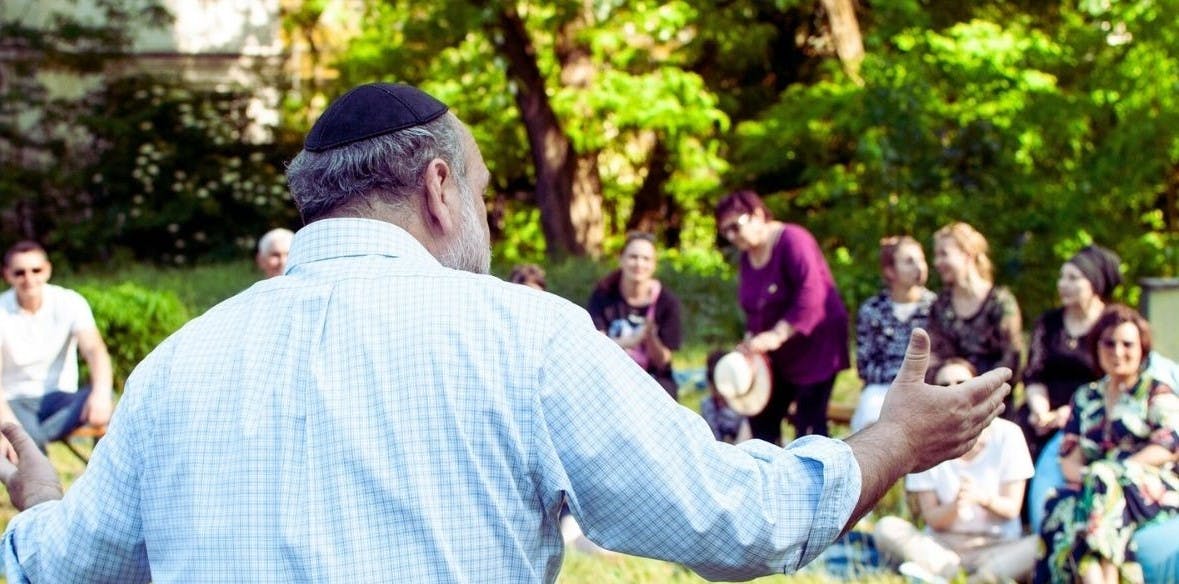
About
The earliest mention of Jewish presence in Warsaw is to be found in early 15th century sources. The municipal registry for the year 1421 records ten Jews inhabiting the city.
The history of Jewish self-rule in Warsaw began in late 18th century, at a time the de non tolerandis Judaeis privilege, which barred Jews from settling or owning property within the city limits, was still in effect; this is why Jews settled outside the boundaries of Warsaw, primarily in Praga.
In 1799, Jews were allowed to form own communities, thus enabling the development of the Warsaw Jewish community. In the second half of the 19th century, The earlier restrictions on settlement and property acquisition by Jews were lifted and Jews were granted civil rights. By 1864, the Jewish population of Warsaw rose to 72,000 and formed 33% of its total population. Through the 1920s and 1930s Warsaw grew into a major center of Jewish life and culture.
At the outbreak of World War II, Adam Czerniaków became the president of the Warsaw Jewish Community Board, appointed to the post by Warsaw Mayor Stefan Starzyński on September 23, 1939. Adam Czerniaków was also appointed to lead the Warsaw Judenrat or Council of Jews established by the Germans in October 1939. At the time, Warsaw’s Jewish population numbered nearly 360,000, with thousands more arriving from the nearby areas annexed to the German Reich. The Germans proceeded to systematically restrict the rights of Jews. They imposed on them the requirement to wear an armband bearing a Star of David, shut down synagogues, banned all collective prayers, including those held in the homes, and Jews were forbidden from entering certain parts of the city.
On October 12, 1940, Ludwig Fischer, the governor of the Warsaw District, announced a decree establishing a ghetto in Warsaw and ordered all Warsaw Jews to move to a designated area. On November 16, 1940, this ghetto was sealed off.
The ghetto of Warsaw became the largest one of those established across German-occupied Europe. By April 1941, the Jews confined to it numbered about 450,000; thousands of them died of starvation and disease, and in the course of displacement operations. Between July 22 and September 21, 1942, more than 275,000 inhabitants of the Warsaw ghetto were deported and murdered, with only 35,000 remaining in the city. Those active in various Jewish resistance organizations put up resistance when the Germans entered the ghetto on April 19, 1943 with the order of liquidating it; an uprising broke out. The armed struggle continued until May 16, 1943. On that day, the Germans blew up the Great Synagogue of Tłomackie Street, determined to thereby mark the suppression of the uprising and the liquidation of the Warsaw ghetto.
Very few Warsaw Jews survived the Holocaust. In 1946, the city’s Jewish population stood at about 18,000. The Religious Union of the Mosaic Faith in Poland established in August 1946 sought to cater to the religious needs of Jews, but its activities were gradually curtailed and its membership decreased, primarily through successive waves of emigration. By the early 1970s, the number of Jews in Warsaw had dwindled to 2,000 who in some measure continued to cultivate religious practices, run communal welfare organizations, cultivate cultural life and to safeguard their material culture.
The present day Jewish Religious Community in Warsaw is the moral and legal heir of the pre-war local Jewish communities. The structure was reactivated under the February 20, 1997 Act on the Relationship of the State and Jewish Religious Communities in the Republic of Poland, which came into force on May 11, 1997. Poland’s Jewish communities enacted their Internal By-laws in 2006. Taken together, the two documents provide the legal framework for the operation of today’s Jewish communities in Poland. A constituent member of the Union of Jewish Religious Communities in Poland, the Jewish Religious Community in Warsaw is the primary organization of the Jewish community in Warsaw. Together with its branch in Lublin, the Warsaw Kehilla forms the largest of the Union’s communities.
Community membership is open to persons entitled to apply for Israeli citizenship, according to the Law of Return (the condition being that at least one of their grandparents is/was Jewish), and to persons who completed their conversion to Judaism under the auspices of one of the rabbis of the Community.
The Jewish Religious Community in Warsaw has more than 700 adult members: young and old, professionally active and seniors, the religious and the non-religious. All those interested in joining Warsaw’s Jewish community and working for its benefit can find their place in the Jewish Religious Community in Warsaw. It offers social, cultural and educational programs to all its members, and delivers social assistance to those in need of it.
The Community operates: the Załman and Rywka Nożyk Orthodox Synagogue, Warsaw’s sole synagogue building to survive the ravages of war; the Ec Chaim Progressive Synagogue; and the Yeshivas Chachmei Synagogue in Lublin. The Community retains four rabbis: Michael Schudrich, who has served as Chief Rabbi of Poland since 2004; Yitzhak Rapoport, Stas Wojciechowicz and Małgorzata Kordowicz. The Community also operates: a mikveh, Chevra Kadisha Burial Fraternity, Senior Citizen’s Club, ‘Bejtejnu’ Community Club, Ec Chaim Shabbat Nursery, a cheder operated at the Warsaw JCC, a kosher store and a kosher canteen.